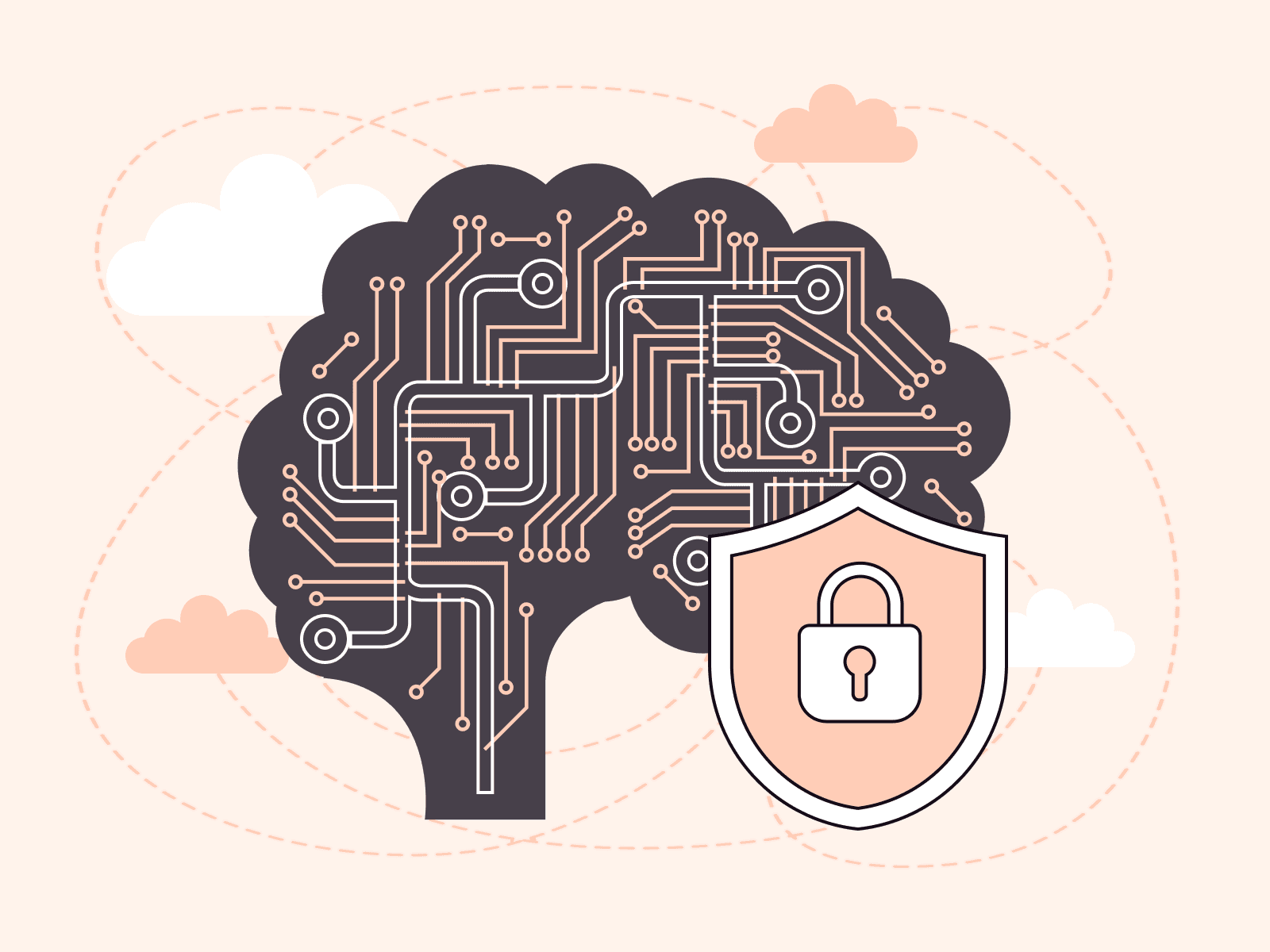3 underestimated security risks of AI workloads and how to overcome them
- By Gcore
- July 31, 2025
- 5 min read
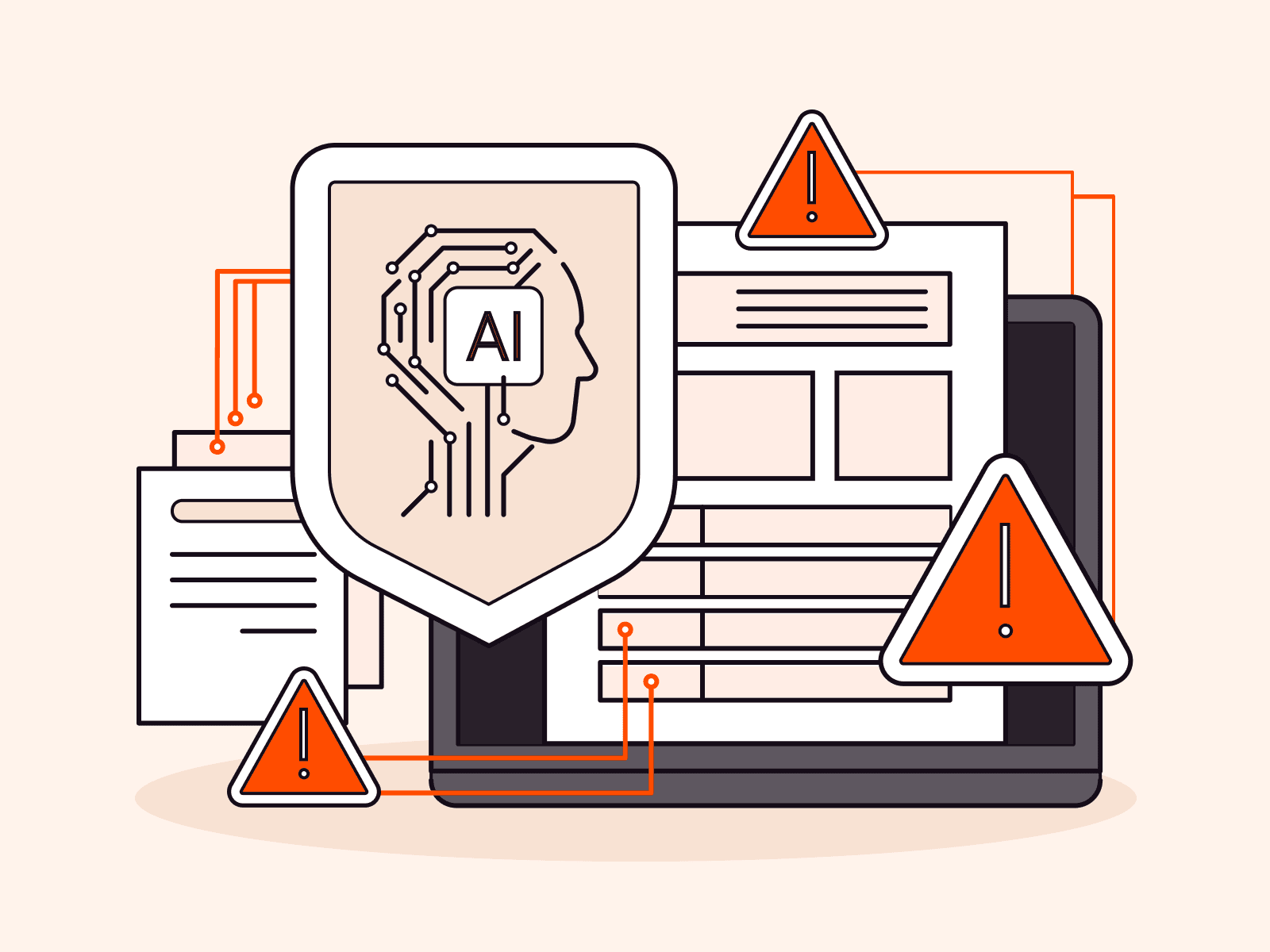
Artificial intelligence workloads introduce a fundamentally different security landscape for engineering and security teams. Unlike traditional applications, AI systems must protect not just endpoints and networks, but also training data pipelines, feature stores, model repositories, and inference APIs. Each phase of the AI life cycle presents distinct attack vectors that adversaries can exploit to corrupt model behavior, extract proprietary logic, or manipulate downstream outputs.
In this article, we uncover three security vulnerabilities of AI workloads and explain how developers and MLOps teams can overcome them. We also look at how investing in your AI security can save time and money, explore the challenges that lie ahead for AI security, and offer a simplified way to protect your AI workloads with Gcore.
Risk #1: data poisoning
Data poisoning is a targeted attack on the integrity of AI systems, where malicious actors subtly inject corrupted or manipulated data into training pipelines. The result is a model that behaves unpredictably, generates biased or false outputs, or embeds hidden logic that can be triggered post-deployment. This can undermine business-critical applications—from fraud detection and medical diagnostics to content moderation and autonomous decision-making.
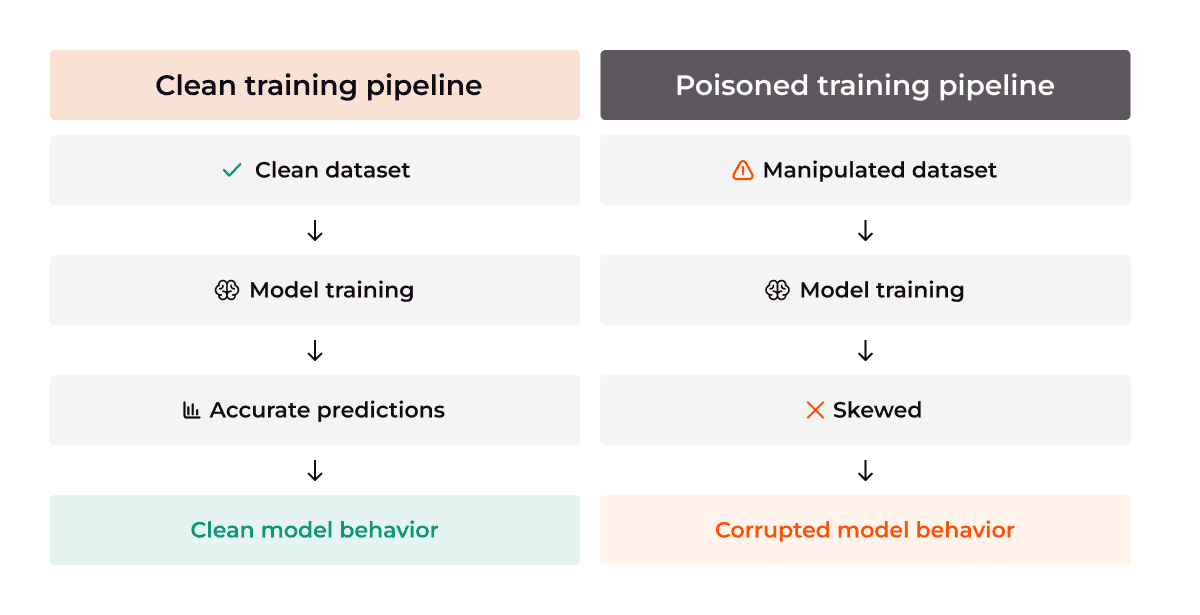
For developers, the stakes are high: poisoned models are hard to detect once deployed, and even small perturbations in training data can have system-wide consequences. Luckily, you can take a few steps to mitigate against data poisoning and then implement zero-trust AI to further protect your workloads.
Mitigation and hardening
- Restrict dataset access using IAM, RBAC, or identity-aware proxies.
- Store all datasets in versioned, signed, and hashed formats.
- Validate datasets with automated schema checks, label distribution scans, and statistical outlier detection before training.
- Track data provenance with metadata logs and checksums.
- Block training runs if datasets fail predefined data quality gates.
- Integrate data validation scripts into CI/CD pipelines pre-training.
- Enforce zero-trust access policies for data ingestion services.
Solution integration: zero-trust AI
- Implement continuous authentication and authorization for each component interacting with data (e.g., preprocessing scripts, training jobs).
- Enable real-time threat detection during training using runtime security tools.
- Automate incident response triggers for unexpected file access or data source changes.
Risk #2: adversarial attacks
Adversarial attacks manipulate model inputs in subtle ways that trick AI systems into making incorrect or dangerous decisions. These perturbations—often imperceptible to humans—can cause models to misclassify images, misinterpret speech, or misread sensor data. In high-stakes environments like facial recognition, autonomous vehicles, or fraud detection, these failures can result in security breaches, legal liabilities, or physical harm.
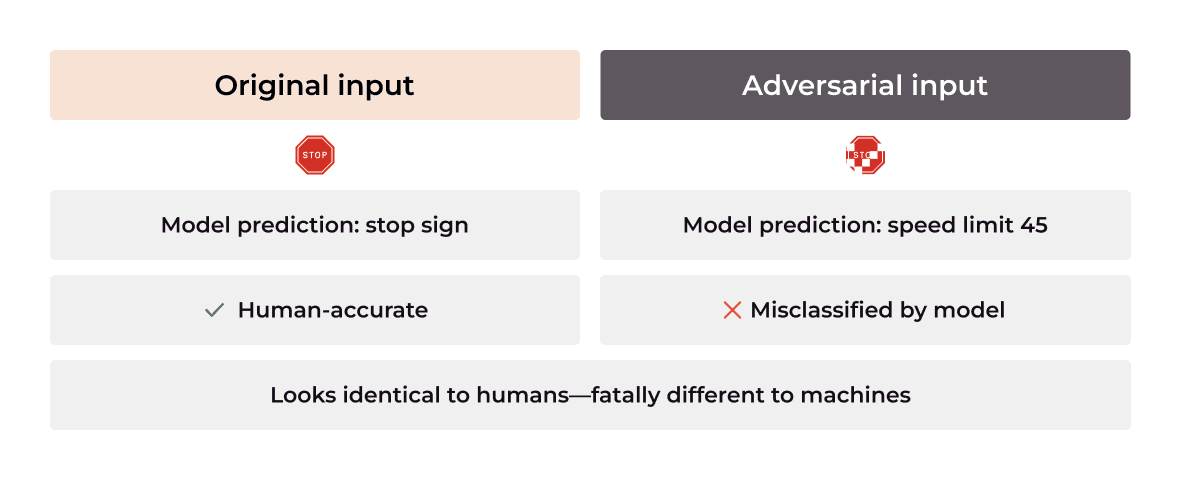
For developers, the threat is real: even state-of-the-art models can be easily fooled without adversarial hardening. The good news? You can make your models more robust by combining defensive training techniques, input sanitization, and secure API practices. While encrypted inference doesn’t directly block adversarial manipulation, it ensures that sensitive inference data stays protected even if attackers attempt to probe the system.
Mitigation and hardening
- Use adversarial training frameworks like CleverHans or IBM ART to expose models to perturbed inputs during training.
- Apply input sanitization layers (e.g., JPEG re-encoding, blurring, or noise filters) before data reaches the model.
- Implement rate limiting and authentication on inference APIs to block automated adversarial probing.
- Use model ensembles or randomized smoothing to improve resilience to small input perturbations.
- Log and analyze input-output patterns to detect high-variance or abnormal responses.
- Test models regularly against known attack vectors using robustness evaluation tools.
Solution integration: encrypted inference
While encryption doesn't prevent adversarial inputs, it does mean that input data and model responses remain confidential and protected from observation or tampering during inference.
- Run inference in trusted environments like Intel SGX or AWS Nitro Enclaves to protect model and data integrity.
- Use homomorphic encryption or SMPC to process encrypted data without exposing sensitive input.
- Ensure that all intermediate and output data is encrypted at rest and in transit.
- Deploy access policies that restrict inference to verified users and approved applications.
Risk #3: model leakage of intellectual assets
Model leakage—or model extraction—happens when an attacker interacts with a deployed model in ways that allow them to reverse-engineer its structure, logic, or parameters. Once leaked, a model can be cloned, monetized, or used to bypass the very defenses it was meant to enforce. For businesses, this means losing competitive IP, compromising user privacy, or enabling downstream attacks.
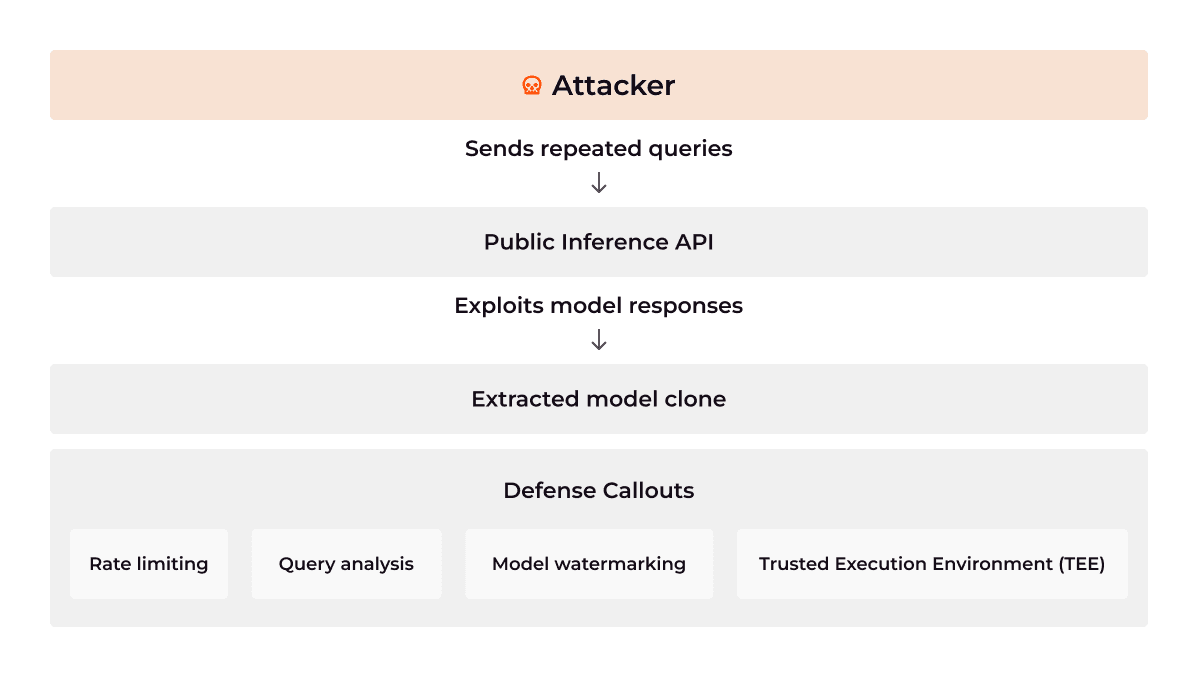
For developers and MLOps teams, the challenge is securing deployed models in a way that balances performance and privacy. If you're exposing inference APIs, you’re exposing potential entry points—but with the right controls and architecture, you can drastically reduce the risk of model theft.
Mitigation and hardening
- Enforce rate limits and usage quotas on all inference endpoints.
- Monitor for suspicious or repeated queries that indicate model extraction attempts.
- Implement model watermarking or fingerprinting to trace unauthorized model use.
- Obfuscate models before deployment using quantization, pruning, or graph rewriting.
- Disable or tightly control any model export functionality in your platform.
- Sign and verify inference requests and responses to ensure authenticity.
- Integrate security checks into CI/CD pipelines to detect risky configurations—such as public model endpoints, export-enabled containers, or missing inference authentication—before they reach production.
Solution integration: native security integration
- Integrate model validation, packaging, and signing into CI/CD pipelines.
- Serve models from encrypted containers or TEEs, with minimal runtime exposure.
- Use container and image scanning tools to catch misconfigurations before deployment.
- Centralize monitoring and protection with tools like Gcore WAAP for real-time anomaly detection and automated response.
How investing in AI security can save your business money
From a financial point of view, the use of AI and machine learning in cybersecurity can lead to massive cost savings. Organizations that utilize AI and automation in cybersecurity have saved an average of $2.22 million per data breach compared to organizations that do not have these protections in place. This is because the necessity for manual oversight is reduced, lowering the total cost of ownership, and averting costly security breaches. The initial investment in advanced security technologies yields returns through decreased downtime, fewer false positives, and an enhanced overall security posture.
Challenges ahead
While securing the AI lifecycle is essential, it’s still difficult to balance robust security with a positive user experience. Rigid scrutiny can add additional latency or false positives that can stop operations, but AI-powered security can avoid such incidents.
Another concern organizations must contend with is how to maintain current AI models. With threats changing so rapidly, today's newest model could easily become outdated by tomorrow’s. Solutions must have an ongoing learning ability so that security detection parameters can be revised.
Operational maturity is also a concern, especially for companies that operate in multiple geographies. Well-thought-out strategies and sound governance processes must accompany the integration of complex AI/ML tools with existing infrastructure, but automation still offers the most benefits by reducing the overhead on security teams and helping ensure consistent deployment of security policies.
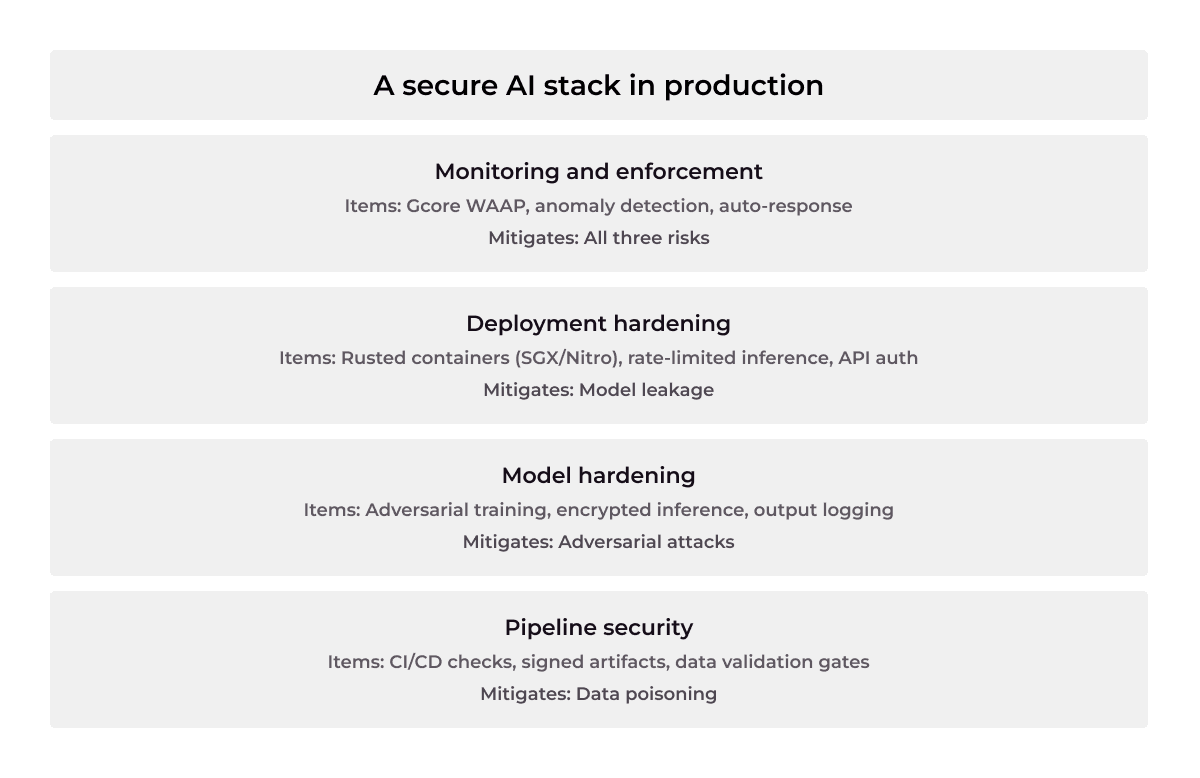
Get ahead of AI security with Gcore
AI workloads introduce new and often overlooked security risks that can compromise data integrity, model behavior, and intellectual property. By implementing practices like zero-trust architecture, encrypted inference, and native security integration, developers can build more resilient and trustworthy AI systems. As threats evolve, staying ahead means embedding security at every phase of the AI lifecycle.
Gcore helps teams apply these principles at scale, offering native support for zero-trust AI, encrypted inference, and intelligent API protection. As an experienced AI and security solutions provider, our DDoS Protection and AI-enabled WAAP solutions integrate natively with Everywhere Inference and GPU Cloud across 210+ global points of presence. That means low latency, high performance, and proven, robust security, no matter where your customers are located.
Talk with our AI security experts and secure your workloads today
Related articles
Subscribe to our newsletter
Get the latest industry trends, exclusive insights, and Gcore updates delivered straight to your inbox.

